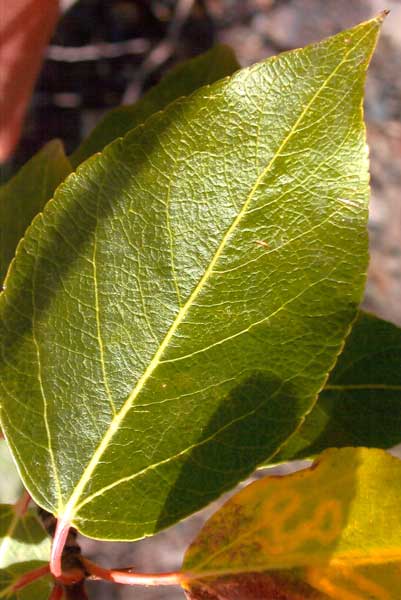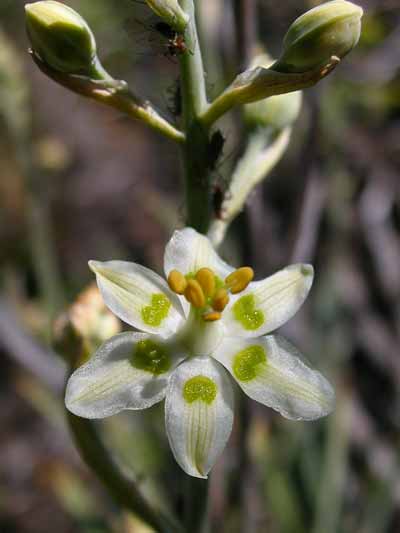Angiospermae : Inclosed Seed Division
Taxonomy | Illustrated Key | Dichotomous Key | Biology | Division Traits
Angiospermae Taxonomy |
Scientific Name:Kingdom: Plantae Divisions:
Classes: 2 Monocoteldonae (one seed-leaf) Dicoteldonae (two sead-leaves) Families: 56 Genera: Species: 550 English Name(s):Inclosed Seed division, Angiosperms, Flowering plants Gwich'in Name: |
Angiospermae Division Traits |
Description:
Class descriptions:Dicoteldonae
Monocoteldonae
Division Size:World: Families: 532 Genera: Species: 300,000 North America: Families: Genera: Species: Yukon: Families: 69 Genera: Species: 1040 |
Illustrated Key To Angiospermae Division | ||
|
Note: Move cursor over image for note on what to look for. Click on image to enlarge. |
Dicotomous Key To Angiospermae Division |
|
A: Flowers parts in 3s; leaf viens parallel and unbranching: Always herbacious: Monocoteldonae A: Flower parts in 4s or 5s; Leaf viens branching; Herbacious or woody: Dicoteldonae |
Biology of Angiospermae Division |
Natural History:Over time the seed plants became more sophisticated. Some Gymnosperms probably those of the Gnetophytes, a sister branch to the conifers, started to protect thier ovules in a carpel. The ovule or ovules and carpel together make the ovary. For pollen grains to have access to the ovules and the female gametophyte (egg) within, a special place for the pollen to land was developed. This is called the stigma and is usually atop of a style (tube to the ovary). While the seed plants were doing all this they were also developing a relationship with animals, mostly insects, to help in pollination. Having insects carry the pollen from the anthers (male) of one flower to the stigma (female) of another, the plant does not need to produce nearly as much pollen as it would if it relied on wind pollination. Flowers also developed bisexuality. They have both male and female parts in the same flower. Some species though have what is called imperfect flowers of only one gender, male or female. The first angiosperms (flowering seed plants) appeared only 140 MYA but now account for 96% of all vascular plant species. Flowers:For more flower terms and diagrams visit the Flower Glossary Page. For the most part flowers are showy (colourful and relatively large petaled) as they are intended to attract pollinators. Most plants attract insects as pollinators and some are very specific as to which sort of insect (flying or walking). Some are even specialized to attract a specific species. Other flowers may be pollinated by birds or mammals. Some flowers are not showy at all and rely on different means of getting thier pollen to a flower pistil. Some families such as those bearing catkins and the graminoids (grass like species) do not have showy flowers at all. They have reverted to wind pollination. Others such as some aquatic species also lack showy flowers and rely on water to distribute thier pollen. It should be noted that pollination is simply the moving of a pollen grain from an anther (male) to a stigma (female) of another flower or the same flower. It is not the same as fertilization,the joining of the male and female gametes, which happens after pollination if everything goes well. Fruit:A fruit is formed when a flower is fertilized. It is the product of the changes in the flowers ovary. Fuits are so varied that it is difficult to come up with a simple classification scheme. Botanists have developed a vocabulary of over 150 fruit terms in thier efforts. Many fruits are flase fruits such as juniper berries which are actually fleashy cones or strawberries which are not produced from the ovary and so not technically a fruit. There are three basic types of fruits:
There are also three basic categories of fruit classification:
Life Cylce
|








